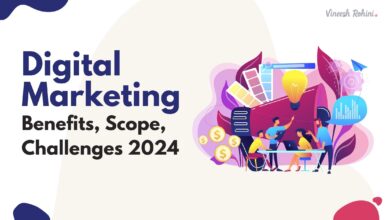Personalization in Marketing: Unleashing the Power of Tailored Customer Experiences
Introduction
In today’s fast-paced and highly competitive business landscape, the success of marketing campaigns relies heavily on connecting with customers on a personal level. The era of generic, one-size-fits-all marketing strategies is gradually fading away, making room for a new paradigm: personalization in marketing. Personalization entails understanding individual customer preferences, needs, and behaviors to deliver tailored experiences that resonate with each recipient. This essay explores the significance of personalization in marketing, its evolution, benefits, challenges, and the technologies driving this transformative trend.
Section 1: The Evolution of Marketing Personalization
1.1 Historical Overview
The concept of personalization in marketing is not entirely new. Historically, businesses have utilized techniques like handwritten letters, personalized offers, and direct mail marketing to target specific segments of their audience. However, these efforts were limited in scale and lacked the precision offered by modern-day personalization technologies.
1.2 The Digital Revolution
The rise of the internet and digital technologies has been a game-changer for marketing personalization. Online platforms, social media, and e-commerce websites generate vast amounts of customer data, enabling marketers to gain insights into individual preferences and behavior patterns. This data-driven approach forms the foundation of today’s personalized marketing strategies.
Section 2: The Significance of Personalization in Marketing
2.1 Enhancing Customer Experience
Personalization allows marketers to create a unique and seamless customer journey, starting from the first interaction and continuing throughout the customer lifecycle. By delivering relevant content, product recommendations, and offers, businesses can enhance the overall customer experience, leading to increased customer satisfaction and loyalty.
2.2 Boosting Engagement and Conversions
Tailored marketing messages have a higher chance of capturing customers’ attention and resonating with their needs. This increased relevance leads to improved engagement rates and, ultimately, higher conversion rates. Personalized email campaigns, product recommendations, and targeted advertisements are just a few examples of how personalization can drive better results.
2.3 Fostering Brand Loyalty
Customers are more likely to stay loyal to a brand that understands their preferences and consistently delivers personalized experiences. By nurturing a deeper connection with customers, businesses can build lasting brand loyalty and advocacy, contributing to long-term success and customer retention.
Section 3: Strategies and Techniques for Effective Personalization
3.1 Customer Segmentation
Effective personalization begins with segmenting the customer base into distinct groups based on demographics, behavior, or preferences. By understanding these segments, marketers can tailor their messages to resonate with each group’s unique characteristics.
3.2 Behavioral Tracking and Data Analysis
Collecting and analyzing customer data is critical for successful personalization. Businesses can leverage web analytics, cookies, and customer relationship management (CRM) systems to track customer behavior, including website visits, browsing patterns, and purchase history. This data-driven approach helps in generating personalized recommendations and offers.
3.3 Dynamic Content and A/B Testing
Dynamic content allows marketers to display personalized content to individual users based on their previous interactions or preferences. A/B testing, on the other hand, enables businesses to test different variations of content, offers, or layouts to identify the most effective personalized strategies.
Section 4: Challenges and Concerns in Implementing Personalization
4.1 Data Privacy and Security
One of the major challenges in personalization is maintaining data privacy and security. As businesses gather and store large amounts of customer data, there is an increased risk of data breaches and misuse. Companies must prioritize data protection and comply with relevant data protection regulations to build and maintain customer trust.
4.2 Managing Complexity
As personalization efforts grow in scale and complexity, managing and analyzing vast amounts of customer data can become overwhelming. Marketers need to invest in robust data management systems and AI-driven analytics tools to make sense of this data and derive actionable insights.
4.3 Balancing Personalization with Intrusiveness
While personalization can enhance customer experiences, there is a fine line between providing relevant content and becoming intrusive. Bombarding customers with excessive personalized ads or recommendations can lead to a negative user experience. Striking the right balance is crucial to avoid customer fatigue and ensure long-term engagement.
Section 5: Technologies Driving Personalization
5.1 Artificial Intelligence (AI) and Machine Learning (ML)
AI and ML technologies play a central role in personalization by analyzing customer data, predicting preferences, and delivering tailored content in real-time. These technologies power recommendation engines, chatbots, and content optimization tools, making personalization scalable and efficient.
5.2 Customer Data Platforms (CDPs)
CDPs consolidate customer data from various sources into a unified profile, creating a 360-degree view of each customer. These platforms enable marketers to access accurate and real-time data for personalized targeting and segmentation.
5.3 Personalization Engines
Personalization engines use AI algorithms to process customer data and deliver personalized experiences across various touchpoints, such as websites, mobile apps, and email campaigns. These engines dynamically adapt content and offers based on customer behavior and preferences.
Conclusion
Personalization in marketing has emerged as a vital strategy for businesses seeking to forge meaningful connections with their customers in the digital age. By understanding customer preferences, behavior, and needs, businesses can deliver tailored experiences that enhance customer satisfaction, boost engagement, and foster brand loyalty. As technology continues to evolve, the role of AI-driven personalization is set to become even more significant. However, marketers must navigate challenges related to data privacy, complexity, and intrusiveness to harness the full potential of personalized marketing successfully. Ultimately, those businesses that embrace personalization with a customer-centric approach are likely to thrive in the ever-evolving landscape of marketing and customer experience.



